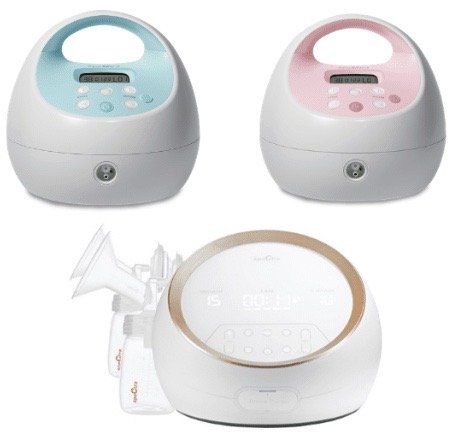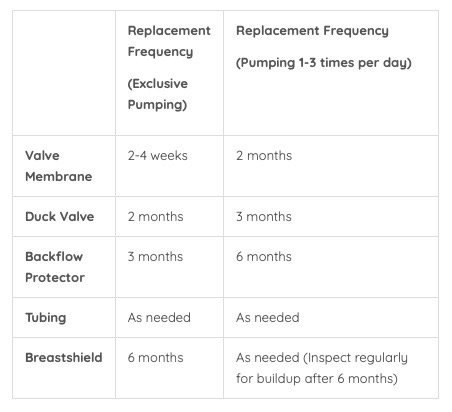A comprehensive guide to spectra pump settings
Note that this post is not sponsored by Spectra; the opinions shared here are my own. This post may have affiliate links, which means I may receive commissions if you choose to purchase through links I provide (at no extra cost to you). As an Amazon Associate, I earn from qualifying purchases. Read more about these links in my disclosure policy.
This article is all about how to optimize Spectra pump settings. I’ve been using a Spectra breast pump personally for the last 8+ years for over 75 months of total pumping and nursing as a mom of five. We’ll go over how to make the most of your Spectra breast pump to give you the most efficient and comfortable pumping experience. Whether you have the Spectra S1, Spectra S2, the Spectra Synergy Gold, or the Spectra Synergy Gold Portable, this information is common across Spectra breast pumps except where noted below.
understanding your spectra pump settings: a quick start guide
Massage Mode vs. Expression Mode
Spectra pumps are designed with two primary modes: massage mode and expression mode.
Massage Mode - think of this as your warm up. This mode mimics the suckling of your baby and triggers your let down. I typically use this for the first 1-2 minutes of pumping.
Expression Mode - switch to this mode once your letdown occurs and your milk starts flowing. This will be your most efficient pump setting for the majority of your pumping session.
Adjustable suction strength
Spectra pumps offer 12 different levels of adjustable suction strength (levels 1 - 12, except for the Spectra Synergy Gold pump, which has 15 levels). I recommend starting with a low suction strength to start and then gradually increasing until you find a setting that is both comfortable and effective. Stronger suction does not necessarily mean more milk, so find the sweet spot that works best for you. At a level 12, the Spectra pumps have a suction of 270 mmHg.
Customizing cycle speed
The cycle speed is the frequency of suctions per minute, and the Spectra breast pump allows you to adjust this. Both the Spectra S1 and the Spectra S2 have cycle speeds of 70, 54, 50, 46, 42, and 38. This means that the pumps range anywhere from a 38 cycles per minute on the slow end to 70 cycles per minute on the higher end.
Like suction strength, there is no perfect answer for cycle speed. For this setting, I again recommend you experiment with different cycle speeds to find which works best for you to maximize both effectiveness and comfort.
Nightlight feature
Did you know that your Spectra pump has a built-in nightlight? It’s ideal for those late-night pumping sessions and adds some convenience to the pumping process.
pro tips for spectra pump settings
Mimic your baby’s sucking pattern: Observe your baby’s sucking pattern (I recommend setting a 1 minute timer and counting the number of times they suckle) and try to mimic it using the massage and expression modes. This can help trigger your letdown and also helps you find that sweet spot of cycle speed that will work best for you.
Comfort is key: A higher suction or faster cycle speed doesn’t always mean more milk. You’re more likely to continue pumping and thus providing breast milk for your baby for a longer period of time if it is a comfortable experience for you. Focus on finding a suction strength and cycle speed that provides efficient milk removal AND is comfortable.
Experiment with pump settings: Don’t be afraid to keep experimenting until you find the best combination of suction strength and cycle speed that works for you to maximize efficiency, milk production, and comfort. This can take some trial and error, so have patience as you experiment with different Spectra pump settings to find the best combination for you.
Specta Breast Pump Settings - Video Tutorial
Troubleshooting Common concerns
Pain or discomfort
If you are experiencing pain or discomfort, you should first try dialing back the suction strength. Pumping should not be painful.
Low milk supply
If you are experiencing low milk supply, you should experiment with different settings and try breast compressions while pumping. A few other tips to look into include ensuring you’re getting good nutrition, hydration, and sleep. Additionally, you should check that you are using the correct flange size. The Spectra pumps come standard with both the 24mm and 28mm sizes, so be sure you’re using the one that fits you best as that can impact breast pump efficacy and comfort.
Replacement pump parts
Over time, your Spectra pump parts may need replacement, or you may want to purchase extras to have on hand. You can easily order Spectra replacement pump parts. Here are the most commonly replaced Spectra pump parts:
Here is the recommended frequency for replacing pump parts directly from Spectra’s website.
Recommended timeframe for Spectra pump parts replacement.
Spectra Pump Settings: FREQUENTLY ASKED QUESTIONS
What settings should my Spectra pump be on?
Start in Massage Mode (70 cycles) with low suction (level 2-3) for 1-2 minutes. Once letdown occurs, switch to Expression Mode (54 or lower cycles) and gradually increase suction to a comfortable level (typically 4-8). Remember that the ideal settings vary for each person - focus on what's comfortable and effective for you.
How can I get the most output from my Spectra?
To maximize output:
Start with Massage Mode to trigger letdown
Switch to Expression Mode once milk flows
Use breast compression while pumping
Ensure correct flange fit
Replace pump parts according to schedule
Stay hydrated and relaxed
Consider power pumping if needed
Does a higher cycle speed mean more milk?
No, higher cycle speeds don't necessarily mean more milk. In fact, I’ve found the best output with moderate cycle speeds (42-54) in Expression Mode. The key is finding the right combination of cycle speed and suction that triggers your most effective letdown.
What are the best settings for letdown?
For letdown, use Massage Mode (70 cycles) with moderate suction (levels 2-4). This mimics your baby's initial quick, light sucking pattern. I find success starting at level 2 and gradually increasing to level 4 during the letdown phase.
What settings should I use as a beginner?
As a new pumper, I would recommend:
Start in Massage Mode at level 2
Gradually increase suction to comfort (usually level 3-4)
After letdown (1-2 minutes), switch to Expression Mode
Start at cycle speed 54
Adjust suction and speed gradually until comfortable
What settings work best for colostrum collection?
For colostrum (first few days postpartum):
Use Massage Mode
Keep suction low (levels 1-3)
Use shorter sessions (5-7 minutes per side)
Switch between breasts more frequently
Be patient - colostrum comes in small amounts
I recommend consulting with a lactation consultant about collecting colostrum as pumping can impact your milk supply in those early days.
Is there a universal "best" setting for maximum milk output?
There's no one-size-fits-all setting for maximum output. However, many women report success with:
Expression Mode
Cycle speed 38-46
Suction levels 6-8 Always adjust based on comfort and your body's response.
What settings are recommended for a newborn stage?
When pumping for a newborn:
Mimic frequent feeding patterns (every 2-3 hours)
Use Massage Mode more often
Keep suction moderate (levels 3-5)
Consider shorter, more frequent sessions
Adjust as your milk supply establishes
I recommend consulting with a lactation consultant about pumping in those earliest days as pumping can impact your milk supply.
What do experienced pumpers on forums like Reddit recommend?
Common recommendations from experienced pumpers include:
Starting each session with 2 minutes of Massage Mode
Using breast compression during pumping
Gradually increasing suction throughout the session
Taking "pumping breaks" every 5-7 minutes to massage
Switching back to Massage Mode if milk flow slows
Remember: These are guidelines based on common experiences, but everybody responds differently. Always adjust settings based on your comfort and what works best for you.
Spectra Settings Conclusion
Ultimately, finding the perfect Spectra pump settings is about what you comfortable, maximizes milk output, and supports your overall well-being. Embrace the flexibility the Spectra pumps offer, and don't hesitate to reach out to Spectra's customer support or consult with a lactation consultant for personalized advice. From a 7-year and counting happy Spectra breast pump user, I wish you happy pumping!

